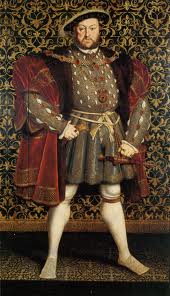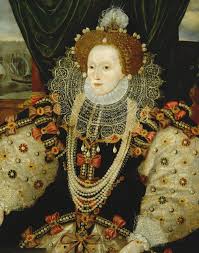Now that we’ve completed our look at Jamestown in our journey through American history, I’ll give you some posts on the next significant group of settlers. We call them the Pilgrims, but that’s only because they proclaimed they were following God’s leading on their trek to the New World. So “pilgrim” is a later term applied to them. In England, they were known as Separatists, and that name could be dangerous to one’s life, liberty, and pursuit of happiness.
 When Elizabeth came to the throne in 1558, her nation had been through a real trial with respect to religious beliefs. Her father, Henry VIII, had been a staunch Catholic who had even written against Martin Luther. The pope at that time had honored him with the title of “Defender of the Faith.” Then things went sour.
When Elizabeth came to the throne in 1558, her nation had been through a real trial with respect to religious beliefs. Her father, Henry VIII, had been a staunch Catholic who had even written against Martin Luther. The pope at that time had honored him with the title of “Defender of the Faith.” Then things went sour.
Henry didn’t have a male heir with his wife, Catherine of Aragon. His concern for the stability of the throne once he passed away led him to ask the pope for an annulment of the marriage on the basis that he had sinned by marrying his deceased brother’s wife. The English clergy found a passage in Leviticus that they used for their argument in favor of the annulment, but it was clearly a twisting of Scripture for personal reasons.
Popes had not been reluctant in the past to grant such annulments, but this time Henry ran into a brick wall. Catherine’s nephew, Charles V, was the Holy Roman Emperor, and the pope was not eager to alienate him. That led to Henry deciding to break from the Catholic Church and set up England’s own church with him at the head. He then appointed bishops that did his bidding. He set aside Catherine and married Anne Boleyn, who became the mother of Elizabeth.
Henry didn’t get his male heir with Anne, so he had her accused of unfaithfulness and executed. He then married Jane Seymour, who finally gave him a son. But that son, Edward VI, didn’t live past his teenage years, so the daughter of Catherine, a queen the Protestants called Bloody Mary, ascended to the throne. She persecuted Protestants and tried to turn the nation back to Catholicism. She reigned only five years, however, so she didn’t accomplish her goal.
 Elizabeth followed Mary to the throne, having stayed alive during the former’s reign by a careful balancing act. She continued that act as queen, deciding that the Church of England—the Anglican Church—would be Protestant in doctrine but look very Catholic. She hoped that would unite the kingdom.
Elizabeth followed Mary to the throne, having stayed alive during the former’s reign by a careful balancing act. She continued that act as queen, deciding that the Church of England—the Anglican Church—would be Protestant in doctrine but look very Catholic. She hoped that would unite the kingdom.
There were, though, some Protestants who were not happy with the idea of the sovereign determining the “true” faith. They had read the Bible for themselves and believed God had given them liberty to set up churches apart from the state so they could follow their consciences in how to worship Him. Those were the Separatists.
They were small in number, but very dedicated to their beliefs, willing to suffer persecution for being faithful to their understanding of Scripture. Queen Elizabeth considered them a thorn in her side, working to divide her kingdom. If they tried to spread their ideas via the printing press, they could even be put to death.
It was a congregation of these Separatists who ultimately decided they had to leave England in order to worship God according to what they saw in Scripture. They are the ones we now call the Pilgrim Fathers.
What were they like? What trials did they endure? Did they exhibit the kind of character worth emulating today? When they came to the New World, how did they treat the natives?
Today was the background; we’ll delve more into the precise history of these people next week.
